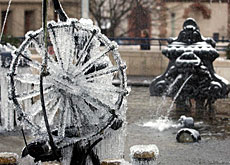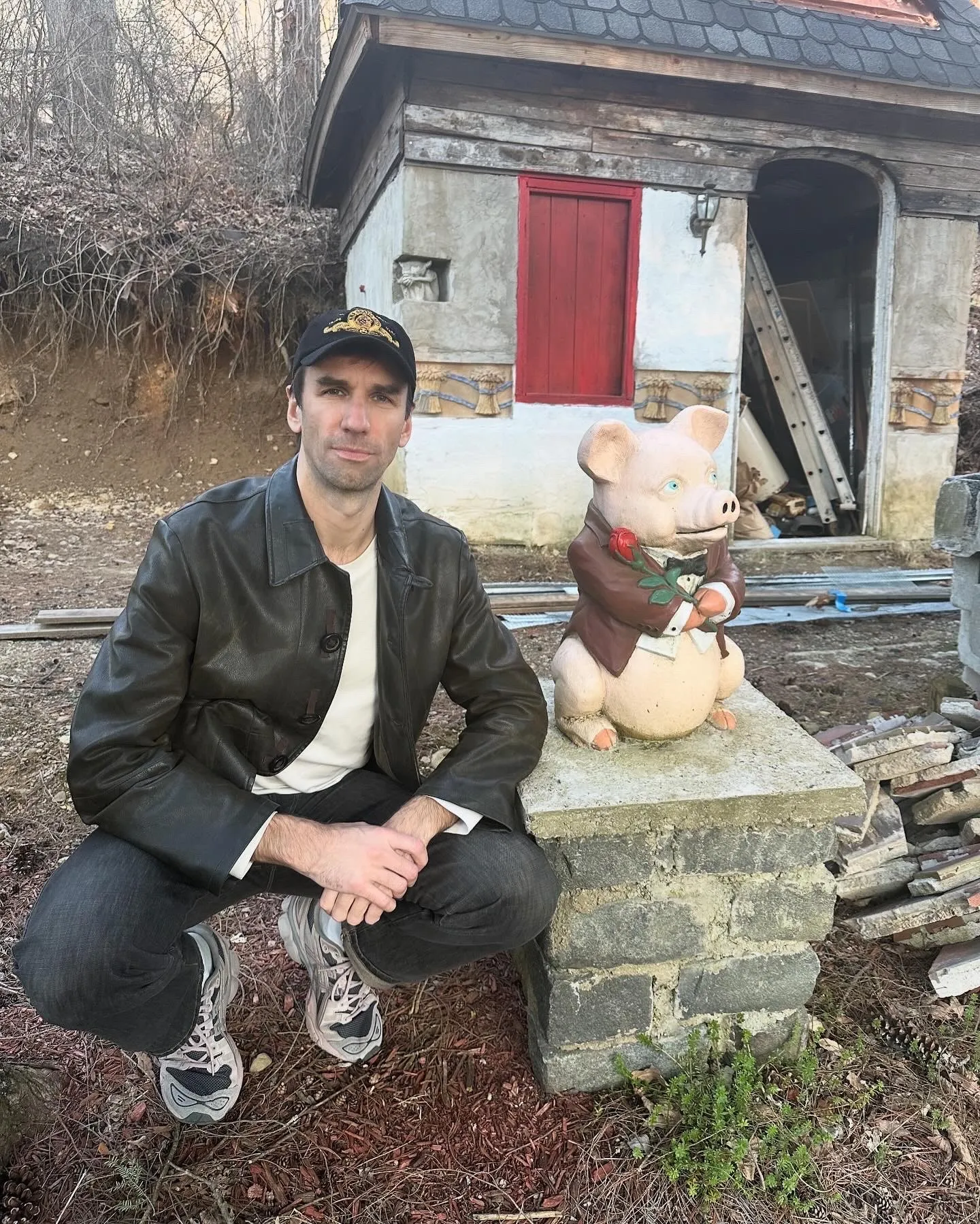Culture and the arts

Architecture
Thanks to urbanisation and industrial growth, Switzerland has always been a fertile ground for architects.
Not only has the country produced several noteworthy architects of its own, it has also attracted several foreign big names.
But the country’s small size and lack of large projects have resulted in many Swiss architects seeking work abroad.
One of the most famous was Charles Edouard Jeanneret (1887-1965) – better known as Le Corbusier. He was born in La Chaux-de-Fonds in the Swiss Jura, but spent most of his professional life in France.
Le Corbusier was most famous for his functionalist architecture and his contribution to town planning. One of his designs has recently been restored in his hometown in Switzerland, but many others can be seen in France and even as far away as India.
Contemporary architects
More recently, Mario Botta, from Italian-speaking Switzerland, has made a name for himself internationally with his bold designs.
His works include the Museum of Modern Art in San Francisco and the newly rebuilt La Scala Opera House in Milan. Botta teaches at the newly founded Ticino University.
And the Basel-based architects Herzog and de Meuron are responsible for the Tate Modern art gallery in London, the striking large copper signal box at Basel railway station, and the Beijing National Stadium for the 2008 Olympic Games.
In 2001, they were awarded the Pritzer Prize, the highest of honours in architecture.
Peter Zumthor became the second Pritzker laureate to be chosen from Switzerland in 2009. Another world renowned architect, Swiss-French Bernard Tschumi, designed the Blue Tower in Manhattan and the new museum at the foot of the Acropolis.
But Switzerland has also been home to many foreign architects. German Gottfried Semper fled to Zurich during the uprisings in Germany in 1848.
He became professor at the newly founded Federal Institute of Technology (ETHZ) in Zurich and designed its original building, as well as the Town Hall in Winterthur.
The Spanish architect Santiago Calatrava also studied in Zurich, where he built the Stadelhofen railway station and a library at Zurich University.
Theatre
Switzerland has a long and rich theatre tradition. Basel, Bern, Zurich all have productions with a name extending beyond their boundaries – the same goes for Geneva.
The large theatres, with or without orchestras and or ballet ensembles, take up the lion’s share of their respective cities’ arts budgets. But there are also numerous small theatres, sometimes specialising in classical repertory, comedy, or fringe productions.
Switzerland also has an abundance of open-air productions despite the often inclement weather.
There are open-air stages for productions of “William Tell” in Interlaken, for Calderon´s “World Theatre” every ten years in Einsiedeln, not to mention the “Fete des Vignerons” which celebrates bucolic life among the wine growers of Vevey and the surroundings on Lake Geneva.
Most plays and productions are regionally or linguistically rooted, but Friedrich Dürrenmatt transcended these strictures to achieve world renown as a dramatist.
Dimitri (1935-2016), the clown from Italian-speaking Switzerland made his name as a stage artist, and has now set up a clown school in the village of Verscio – a school which has been granted university-level status.
Writers
While Friedrich Dürrenmatt is perhaps best known for stage dramas such as “The Physicists”, he also wrote crime stories and screenplays.
His contemporary, Max Frisch, who qualified as an architect in Zurich before becoming a writer, is probably better known for his novels, such as “I’m not Stiller”, rather than as a playwright.
There are many younger Swiss writers who have followed in their footsteps, but inevitably they are fenced in by the linguistic boundaries of the four Swiss national languages, German, French, Italian and Romansh.
Some – like Blaise Cendrars – choose to settle in a major city like Paris. Cendrars even fought as a volunteer on the French side in the First World War. His works have an established place in French literature.
Later, Jacques Chessex also made his name in France, winning the Prix Goncourt in 1973.
Giorgio Orelli, a noted Swiss-Italian writer, was awarded Switzerland’s highest literary distinction, the Schiller Prize, an honour he shared with both Dürrenmatt and Frisch.
Music
Many Swiss have made their name in the world of classical music: Arthur Honegger and Othmar Schoeck were respected composers. Honegger spent much of his life in France, where he was part of the avant-garde of the time (early 20th century).
The 20th century conductor, Ernest Ansermet, was inextricably linked with the Suisse Romande Orchestra, which he founded. Charles Dutoit and Mathias Bamert continued the tradition of international Swiss conductors.
Jazz became popular after the 1930s, and Montreux, Willisau and Lugano hold popular festivals. Bern has a recognised Jazz school.
A wide range of open-air pop and folk music events, as well as classical music festivals are a feature of Switzerland’s summer months.
Painters and sculptors
Many art historians see Ferdinand Hodler as a seminal figure in Swiss painting. His works of the late 19th and early part of the 20th century are popular and fetch high prices at auction.
Hodler’s paintings mainly relate to Swiss themes or places, and in his time he was widely regarded as Switzerland’s national painter. Abroad he has never been awarded the same acclaim as Jean Tinguely or Alberto Giacometti.
In both world wars, Zurich became a haven for all manner of artists. It was there during the First World War that the Dadaist movement started. One of its members, Hans Arp, and his wife, Sophie Taeuber–Arp, later became well-known figures. Sophie Taeuber-Arp is depicted on today’s Swiss SFr50 banknote.
An undisputed icon of modern European art is Paul Klee. He grew up in Switzerland, spent many years in Germany, also lecturing at the famous “Bauhaus”, and was driven back to Switzerland by the antagonism of the Nazi regime in 1930s Germany.
His minimalist painting was designed to “open peoples’ eyes”. Bern, with which Klee was mostly associated, is now the location of the new Paul Klee centre. Designed by star-architect Renzo Piano, the centre opened in 2005.
The Klee centre is a “must” for all art-lovers visiting the city. It joins a list of 1,000 museums in the country. Latest figures show that art galleries are still attracting ever more visitors.

In compliance with the JTI standards
More: SWI swissinfo.ch certified by the Journalism Trust Initiative









You can find an overview of ongoing debates with our journalists here . Please join us!
If you want to start a conversation about a topic raised in this article or want to report factual errors, email us at english@swissinfo.ch.